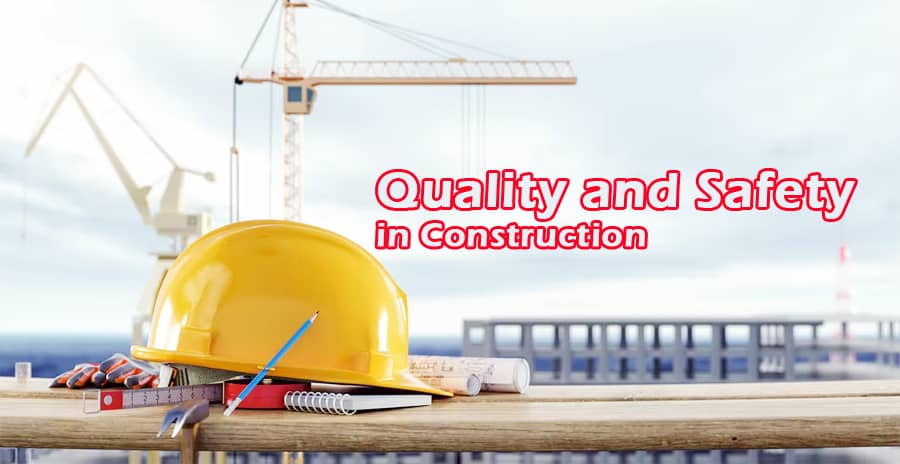An overview of Quality and Safety in Construction

There can be enormous costs associated with construction defects or failures. As part of a construction project, the project manager should be responsible for quality control and safety. It is possible to incur huge costs as a result of mistakes or failures in construction.
In the event of inconsequential defects or damage to the operations of the facility, reconstruction is required.
The presence of flaws increases the cost of the project and causes delays. While the construction process is in progress, failures may cause personal injury or an accident. Because of these increased direct costs, indirect costs associated with insurance, inspections, and regulations can increase significantly.
To manage cost most vital decisions concerning the quality of a finished facility should be taken throughout the design and planning phases instead of the construction phase.
This phase also involves the configuration of components, the specification of materials, and the assessment of functional performance. This process of quality control is primarily focused on ensuring compliance with those innovative design and planning decisions made during construction.
But there also exists some exemption to this rule. An owner may have to reevaluate design decisions throughout the course of construction in the case of improper design decisions or modifications required in the function of the facility resulting from unpredicted circumstances.
Secondly, some designs are based on up-to-date and proper decision-making throughout the construction process. It follows that the facility design becomes more economical, and as a result of such decisions based on better information about the actual site conditions.
It is essential to specify quality requirements in the design and contract documentation when conformance is considered as the primary measurement of quality throughout the construction process. To facilitate the recognition of the requirements for conformance, all project stakeholders must have perfect and valid quality requirements.
Decisions made during the planning and design phases of a construction project have a great impact on the safety of the project as a whole. There are some designs and construction plans that may prove to be challenging and risky to implement, while other equivalent plans may significantly reduce the likelihood of an incident occurring. The safety of construction activities is dependent on a combination of design decisions, education, vigilance, and collaboration throughout the construction process. There is a risk of accidents among workers, and they should refrain from taking non-essential risks.
